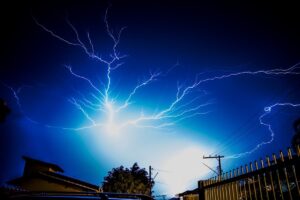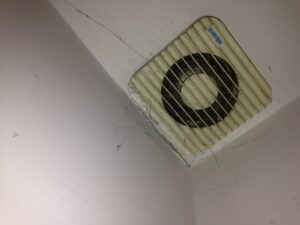It’s easy to find a smoke detector placement diagram online. What’s more important, however, is making sure you follow the recommendations of safety professionals.
This includes not just the proper placement of smoke detectors, but the regular care, inspection, and battery replacements that will keep them functioning properly and protecting your family day in and day out.
Remember, smoke detectors, despite their name, protect us and our families from more than just smoke. In addition to functioning as smoke detection, they also alert us to the presence of carbon monoxide. Waking up to smoke or fire in your home is a terrifying experience. That’s why we install a smoke alarm in sleeping areas, laundry rooms, and near cooking appliances.
National Fire Protection Association (NFPA)
For additional resources about ionization and photoelectric smoke alarms, we suggest you turn to the National Fire Protection Association (NFPA) for more info. They have lots of content dedicated to fire departments, fire alarms, and the appropriate level of your home’s fire and safety measures.
For example, the NFPA recommends the following:
- Smoke alarms labeled by recognized testing laboratories.
- Installing smoke alarms “inside each bedroom, outside each sleeping area and on every level of the home, including the basement.” For basements, they should be installed on the ceiling at the bottom of the stairs.
- For levels with no bedrooms, installing alarms in the living room, den, family room, and/or near the stairway to the upper level.
- Maintaining a distance of at least 10 feet (3 meters) from cooking appliances in order to minimize false alarms.
- Mounting smoke alarms high on walls or ceilings. If alarms are wall-mounted, they should be no more than 12 inches from the ceiling (from the top of the alarm).
- For pitched ceilings, mounting the alarm “within 3 feet of the peak but not within the apex of the peak (four inches down from the peak).”
Those last few are why it’s helpful to have a look at a smoke detector placement diagram. This will help you more clearly see where and how smoke alarms should be installed. Fortunately, as we mentioned at the outset, smoke detector placement diagrams are easy to come by.
Consider also reviewing or buying, if necessary, the NFPA 72 National Fire Alarm and Signaling Code.
You might also consider installing smoke alarms for those who are deaf or hard-of-hearing; they feature strobe lights and furniture or bed shakers. Finally, be sure you and your family are aware of your building’s fire escape routes, whether you’re at home or on the road in a hotel. In the meantime, keep those alarms working by testing them monthly and replacing batteries every six months. Replace all smoke alarms every 10 years.
In Washington, many home remodels are required to hard-wire smoke alarms as part of the job. If walls will be open during the remodel, it’s the perfect time have those smoke alarms installed. If you’re doing a whole-home remodel, contact Prairie Electric to take care of all of your wiring needs.


